Lesson summary
This lesson will have students critically examine and investigate how poverty impacts Australian society’s health and well-being. Students will use their knowledge of community health, social support services and the underlying causes of social disadvantage, to propose collaborative solutions to alleviating some of these underlying barriers to social and economic participation.
Learning intentions:
Students will...
- understand the broader dimensions of poverty in Australian society and how it impacts individuals
- develop empathy and evaluate the impacts of poverty on individuals within specific groups or characteristics in society
- work collaboratively as a team to design and advocate for a program of positive strategies for individuals and groups to help alleviate poverty, enhance wellbeing and promote social and economic wellbeing.
Success criteria:
Students can...
- develop empathy for individuals who suffer poverty and evaluate the impacts of poverty on individuals and groups within wider Australian society
- use their knowledge of community health, social support services, and the underlying causes of social disadvantage to propose collaborative solutions to alleviating some of the underlying barriers to social and economic participation.
Lesson guides and printables
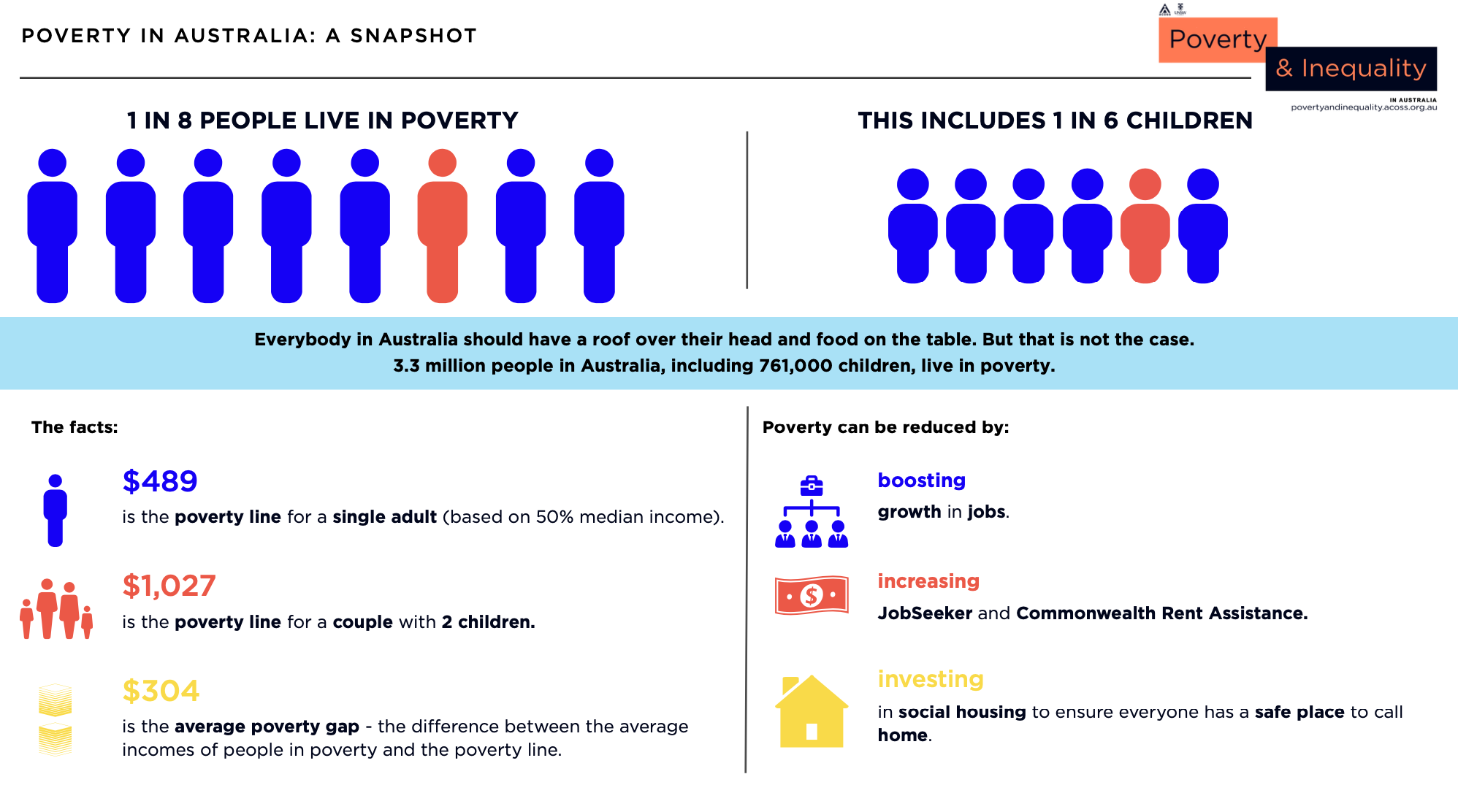
Curriculum links
Select your curriculum from the options below.
Lesson details
Skills
This lesson is designed to build students’ competencies in the following skills:
- communication
- community engagement
- creativity
- critical thinking
- digital literacy
- enterprise
- empathy
- ethical understanding
- problem solving
- collaboration
Curriculum Mapping
Australian Curriculum content descriptions:
Years 9 & 10 HPE:
- Evaluate factors that shape identities and critically analyse how individuals impact the identities of others (ACPPS089)
- Propose, practise and evaluate responses in situations where external influences may impact their ability to make healthy and safe choices (ACPPS092)
- Critique behaviours and contextual factors that influence health and wellbeing of diverse communities (ACPPS098)
Syllabus outcomes: PD5-1, PD5-2, PD5-9, PD5-10
General capabilities: Critical and Creative Thinking, Ethical Understanding, Personal and Social Capability.
Relevant parts of Year 9 & 10 HPE achievement standards: Students access, synthesise and apply health information from credible sources to propose and justify responses to health situations. They apply decision-making and problem-solving skills when taking action to enhance their own and others’ health, safety and wellbeing.
Time required: 120 mins
Level of teacher scaffolding: Low – Teachers provide case studies and instructions, but this lesson is predominantly inquiry-based for students. Teachers should also ensure students are using Internet browsing tools safely and appropriately.
UN Sustainable Development Goals
UN SDG 1: End poverty in all its forms everywhere
- Target: 1.1: By 2030, eradicate extreme poverty for all people everywhere, currently measured as people living on less than $1.25 a day.
- Target: 1.1: By 2030, ensure that all men and women, in particular the poor and the vulnerable, have equal rights to economic resources, as well as access to basic services, ownership and control over land and other forms of property, inheritance, natural resources, appropriate new technology and financial services, including microfinance.
Resources Required
- Access to YouTube and a data projector to show the following to the whole class: More than 3 million people are living in poverty
- Access to YouTube and a data projector to show the following to the whole class: APW 2020 case study bushfires and poverty
- Access to YouTube and a data projector to show the following to the whole class: 1 in 4 Australians are struggling Australians struggling to make ends meet
- Group work configuration, with access to safe Internet browsing facilities and scribing materials for student groups
- Poverty in Australia Overview, 2020 – infographic
- Print-offs (laminated) OR digital access to 6 case studies as presented on http://povertyandinequality.acoss.org.au/category/stories/
- Student Worksheets – one copy per student
Additional info
These lessons have been designed in consultation with Anti-Poverty Week and ACOSS/UNSW Poverty and Inequality Partnership.
The content and information in these lessons may be overwhelming and cause some students to experience heightened emotions.
Please ensure you allow students to ask questions and to discuss any issues or concerns. Before teaching the lesson, you may consider conducting a class check-in or circle time to establish a safe learning environment. Inform students that this might be a complex topic for them to comprehend. However, let your students know that differences in people’s incomes and wealth are nothing to be ashamed of and that these may be beyond the control of individuals and families – for example, some have more luck than others in landing a good job.
Assure students that organisations and campaigns are working towards decreasing poverty in Australia, and if they would like more information, they can visit the Anti Poverty Week website and the Poverty and Inequality website.
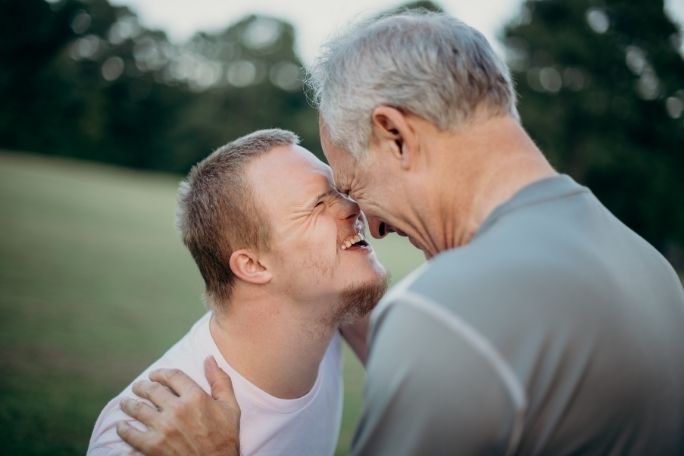
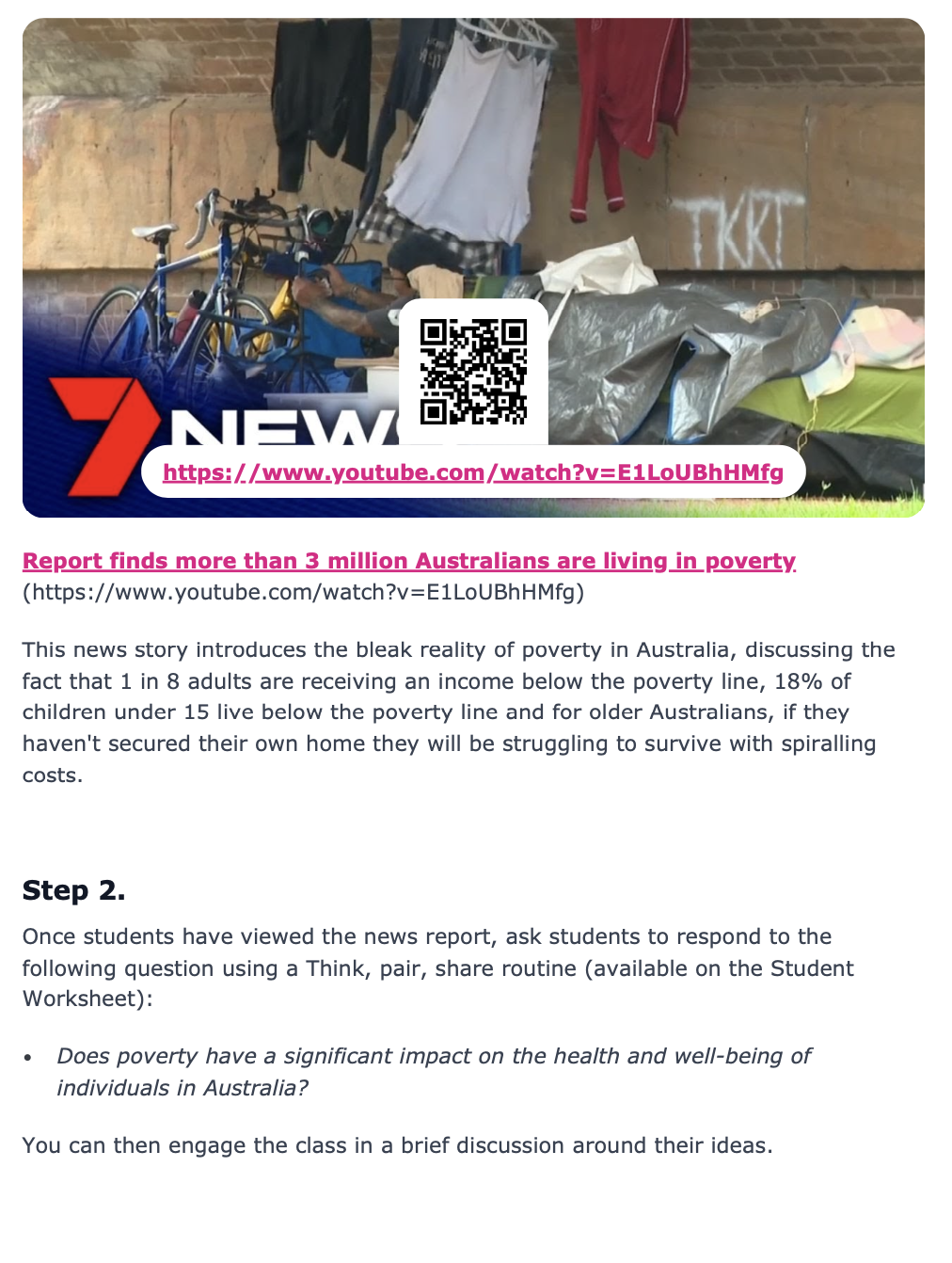
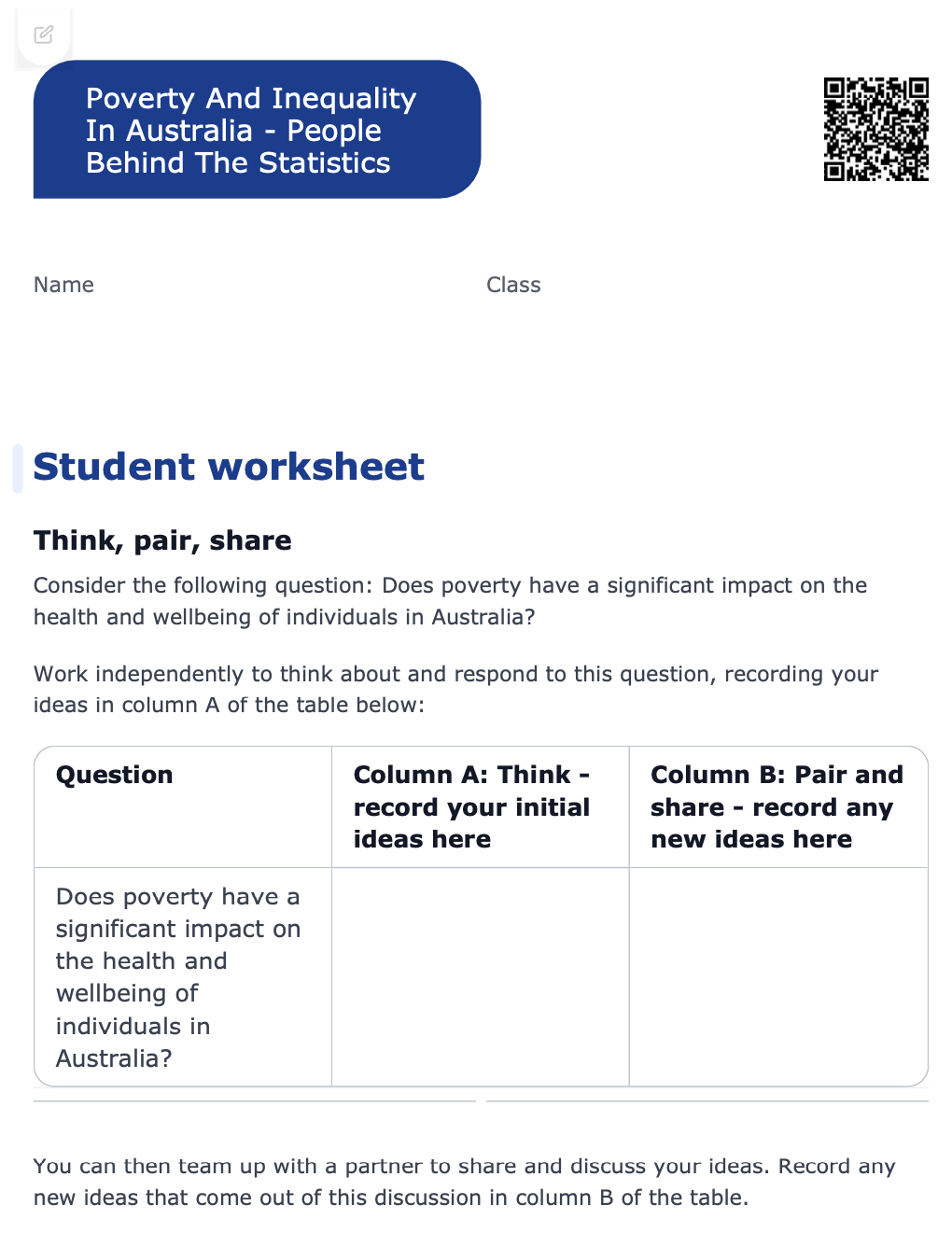
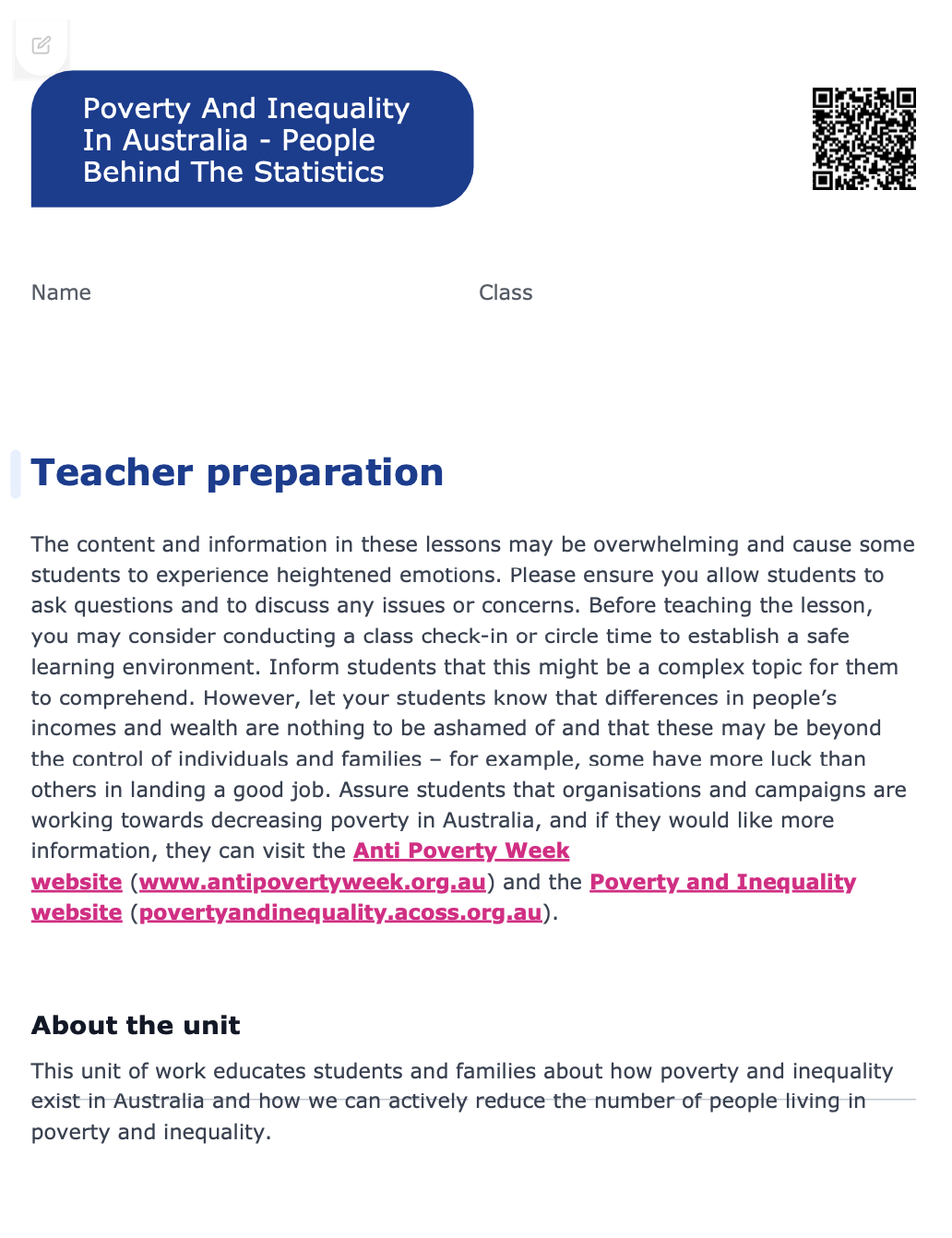
Welcome back!
Don't have an account yet?
Log in with:
Create your free Cool.org account.
Many of our resources are free, with an option to upgrade to Cool+ for premium content.
Already have an account?
Sign up with:
By signing up you accept Cool.org's Terms and Conditions(Opens in new tab) and Privacy Policy(Opens in new tab).